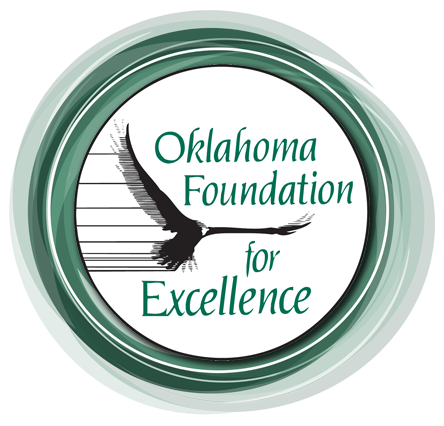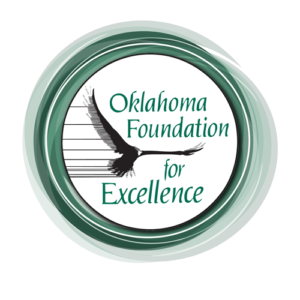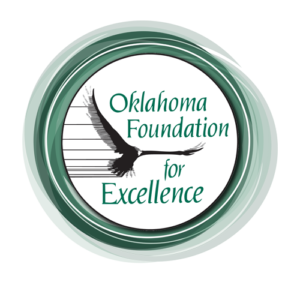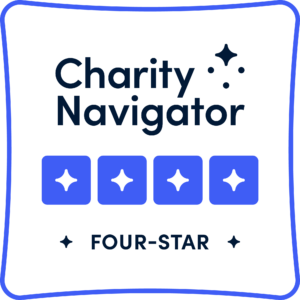Q&A: Women’s Experiences in Jamestown Colony
We are grateful to Rebecca Suerdieck, who portrays Marye Bucke, and Valarie Gray Holmes, who portrays Angela, for taking time to answer additional questions from students about their presentation. Answers by Rebecca Suerdieck are proceeded by RS. Responses by Valarie Gray Holmes are proceeded by VGH.
Q: Can you speak to the clothing at Jamestown?
RS: The English at Jamestown wore the Clothing that was appropriate for the job that they had. Most people were working class and their clothing would have been made of linen or wool. Those who could afford silk wore it, but this was worn by only the very wealthy people.
Q: What did men wear vs. what women wore?
RS: Everyone wore a shirt or shift made of linen. Women wore long skirts called petticoats and a fitted bodice and jacket. Men wore knee-length britches and long socks, along with vests (known as wescots) and jackets.
Q: For Valarie, are you wearing what Africans wore?
VGH: No this is what Angela may have worn when she was in Jamestown. It is not an outfit specifically only for Africans but women working.
Q: Why did they wear the clothes that they did?
RS: The English wore the fashions of the day. Clothing was for warmth and protection, as well as modesty.
Q: What kind of hat are you wearing (Rebecca and Valarie)?
RS: Marye Bucke is wearing a linen cap called a “Coif” (pronounced “kw-off”). This is made to cover the hair as a sign of modesty. The Blue Cap is a fashion cap known as a “Town Cap” or “Flat Cap.” These were popular in England from the 1580s – 1630s.
VGH: I have a headwrap on. It is along piece of cloth that is wrapped and tucked around my head.
Q: What is a fortnight?
RS: Two Weeks (fort-teen nights)
Q: Did women take care of the farm as well as their children?
RS: Women’s roles were domestic, meaning that their responsibility was to take care of everything in the home, including the children, the animals, plus the garden. Their knowledge was to keep everyone fed, warm, and healthy.
Q: How did children learn? Were there schools?
RS: Children were educated at home by their mother. Education including learning skills to help around the house, plus Catechism (Bible Education.) There were no schools for children until the late 18th century (150 years later.)
Q: How did people wash/bathe?
RS: The English people bathed regularly and laundered their clothing daily. Homes did not have plumbing or running water, so living near a stream or well was important. People bathed by means of a sponge bath.
Q: What was considered women’s work?
RS: Women’s work was the tending the garden, cooking all meals, taking care of animals, making cheese, making medicines, making/mending clothing, laundry, keeping house, raising and educating children, brewing, baking and related tasks.
Q: What kind of animals were hunted for food?
RS: The animals that were hunted by the English in the early 17th c were whatever was local and available. This included fishing/harvesting oysters and crabs, fowling (catching wild turkey), and hunting (deer and rabbits.)
Q: How was the food cooked?
RS: The English cooked food over a fire. Meats were roasted, bread was baked, stews simmered in pots with fire as the source of heat. The English commented about the abundant hardwood that was available in Virginia. This was considered ideal for cooking since it lasted a long time and yielded a higher temperature when it burned.
Q: What were Jamestown’s defenses?
RS: The settlers of Jamestown built their first defense within weeks of arriving. It was a three-sided Fort. In 160,8 the Fort expanded to five sides. The Fort was a tall fence called a “Palisade.” The English at Jamestown lived inside the Fort until July 1619, when Martial Law ended and they could leave the Fort.
Q: Did you have any interactions with Powhatan Indians?
RS: Yes, there were many interactions between the English and the Native people. In 1614, Pocahontas (the famous Daughter of the Powhatan Chief) married John Rolfe, the wealthiest man in Virginia. This Marriage yeilded 8 years of peace and good trading between the two cultures.
Marye Bucke would have seen the Virginia Native people, and probably knew Pocahontas.
Q: How hard was it to survive?
RS: Life was hard in England. The people who came to Virginia were not forced to come here. It was very expensive to cross the Atlantic. Many people competed to come here and worked very hard once they arrived.
Q: If women were so important, why didn’t they have the same rights as men? What was the difference in rights between men and women?
RS: Everyone in Virginia was valuable. Virginia was growing very fast, and many different skills were needed to grow and succeed in the New World. Most people (90%) were Contract Labor/ Indentured Servants. Both men and women could be indentured, and both men and women could own land. Most of the passages were paid for by men – in exchange for land right away. Women could own Land if they were widowed or orphaned. In 1621, Marye’s next door neighboor was a 13-year-old girl who was orphaned. She inherited 450 acres of land. Everyone had the same “Rights.” Virginia was the land of opportunity. Unlike England, working people could work hard and eventually own land. Owning land raised their wealth and status in life, and would never have been possible in England.
Q: Did all of the women get married? If some did not, did they have to go back to England?
RS: Yes, all English women were eventually married. It would not be safe to be a woman living alone in Virginia. Being a wife to a Virginia Land Owner raised a woman’s station in life, and brides competed to come to Virginia. Being an unmarried Woman in England meant that she had no dowry (money from her father to get married.) An unmarried woman in England would be lucky to be employed as a governess in another family’s home, or a laundress, seamstress. Some women were not employed and found themselves in unfortunate circumstances.
In the event that someone wanted to return to England, they would have to pay for their return passage, which was very expensive. Some did return to England, but it was not common.
Q: Why were Africans taken?
VGH: This is a very complex question. I am so amazed and impressed that students are thinking out of the box. There are so many reasons why people were taken, and this could be t least a years’ class all by itself. Slave systems were part of many parts of African societies, for instance on the Nile River and across the Sahara Desert. This was before the Europeans arrived on the African continents.
From Colonial Williamsburg website we can see the following: There were various forms of indigenous African slavery, ranging from
- kinship arrangements
- chattel slavery.
- extreme poverty (as with children given away or sold by hungry families, for example),
- pawn slavery (which might be temporary),
- violence, including warfare, slave raids, and kidnapping.
Some were sold on to other communities in need of labor. There was, however, no single form of African slavery.
The coming of European sailors and traders, however, transformed the nature and direction of indigenous African slavery. Africans were taken from the West coast of Africa to be brought to the Americas for labor, to be sold, as captives of war
Q: How many slaves would be on a slave ship?
VGH: There could be anywhere from 200-600 human beings per ship.
Q: How did enslaved Africans learn English?
VGH: Enslaved Africans would learn English as they learned any other language. We can think on how we learn English. By being taught, by being constantly around people who spoke English or any other language. Angela may not have only learned and spoken her native language, but also Portuguese from the priest and soldiers who came and lived in Angola.
Q: What did you eat on the ship?
VGH: Some account books from Spanish ships show plantains, yams, beans and rice. Sometimes a pig may be brought on the ship for fresh meat.
Q: Were children taken?
VGH: Yes, children, young people would be taken. Young boys could be taken from their homes and trained to be soldiers. Many were sold and taken, not by their own people, but people from other tribes and cultures and kingdoms and became captives of the war.
Q: Were slaves on the ships beaten? Thrown overboard?
VGH: Yes to both questions.
The following is an account. This is one example and explains the lack of value of human beings and the value given to insurance and money. Because the voyage is insured this shows a common practice. (Leaving to teachers what is age appropriate) from:
https://www.pbs.org/wgbh/aia/part1/1h280.html
“Heading for Jamaica in 1781, the ship Zong was nearing the end of its voyage. It had been twelve weeks since it had sailed from the west African coast with its cargo of 417 slaves. Water was running out. Then, compounding the problem, there was an outbreak of disease. The ship’s captain, reasoning that the slaves were going to die anyway, made a decision. In order to reduce the owner’s losses, he would throw overboard the slaves thought to be too sick to recover. The voyage was insured, but the insurance would not pay for sick slaves or even those killed by illness. However, it would cover slaves lost through drowning.
The captain gave the order; 54 Africans were chained together, then thrown overboard. Another 78 were drowned over the next two days. By the time the ship had reached the Caribbean, 132 persons had been murdered.
Q: What percentage of enslaved Africans survived the Middle Passage?
VGH: There were roughly 20 million human beings taken from their homes and were part of the Middle Passage and about 50 percent did not survive the journey.
Q: In the book, “Poison in the Colony,” Angela had escaped off the ship in Jamestowne. Is that true?
VGH: I have not read this book, so I think it best not to answer. We know very little about Angela/Angelo only what is written in a ship’s manifest and the inventory of William Peirce.
Q: Did they keep records of Africans that were brought over on ships or died on board by name or by families?
VGH: Yes, because these people were considered human cargo. These captured people most likely were not listed by families because these people came from different cultures, tribes, societies, and kingdoms.
Here are writings from the Jamestown & American Revolution Settlement that show how we know of the existence of Angela/Angelo. The first was a page from the February 16, 1624, “List of Living and Dead,” a list of the colony’s inhabitants taken following the March 1622 Indian uprising which lists Angelo, a negro woman. The second was the 1625 “Muster of the Inhabitants of Virginia.” In June 1624, Virginia became a royal colony following the dissolution of the Virginia Company of London. King James I ordered Virginia’s leaders to make a record of the colony’s inhabitants and provisions. This muster was a house-by-house list which documents “Angelo A Negro woman in the Treasuror” living in the household of William Peirce at Jamestown. This entry is significant, because it identifies the ship on which Angelo arrived in Virginia, the Treasurer.
https://www.historyisfun.org/jamestown-settlement/the-story-of-angelo/
Q: How old was Angela when she was taken?
VGH: Angela’s age when she arrived in Virginia is unknown, but already she had survived the violence of Portuguese and African slave hunters, the horrors of the Middle Passage, during which as much as 43 percent of São João Bautista‘s Africans had died, and the attack of the Treasurer and White Lion.
In March 1620, a muster counted 32 Africans in Virginia, but only 21 remained five years later, suggesting that Angela lived through the disease and illness that affected nearly all newcomers to the colony. And on March 22, 1622, coordinated surprise attacks by Virginia Indians killed nearly a third of Virginia’s non-native population, an event that Angela also survived.
https://www.encyclopediavirginia.org/Angela_fl_1619-1625
Q: What was her life like after arriving in Jamestown?
VGH: Little is known of Angela’s life in Virginia. Her owner, William Peirce, was captain of the Governor’s guard and commander of Jamestown Island and its blockhouses, the small fortified structures that dotted the perimeter of the settlement.
https://www.encyclopediavirginia.org/Angela_fl_1619-1625
Q: What kind of sickness was on the ship?
RS: Sea sickness is a dizzy feeling that is experienced when being on a ship with constant rocking motion. People onboard ships often experience a loss of appetite or “upset stomachs.”
Q: Were many people lost at sea?
RS: The Sea Venture was unique that everyone survived the storm at sea. This is very rare and was considered to be a miracle by the Survivors.
Q: How long did the storm last? (Sea Venture wreck?)
RS: The storm lasted for four days and four nights, starting on St. James Day – July 26, 1609.
Q: Did the people wrecked on Bermuda survive? Did they ever reach Jamestown?
RS: No, not all of the English people survived while living in Bermuda. John Rolfe’s first wife and newborn baby died. Yes, most did reach Jamestown, leaving Bermuda on May 10, 1610, and arriving to Jamestown on May 23, 1610.




